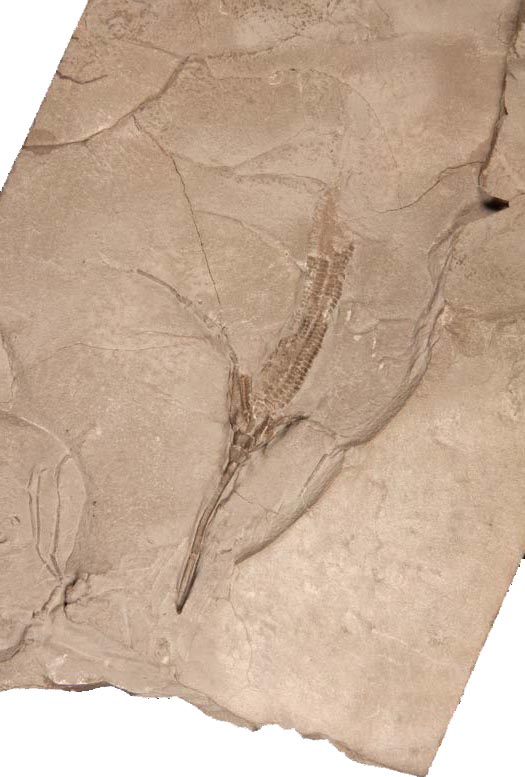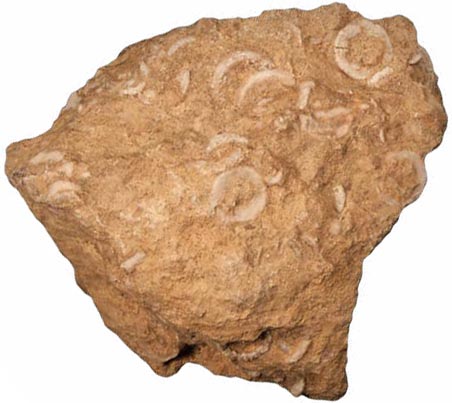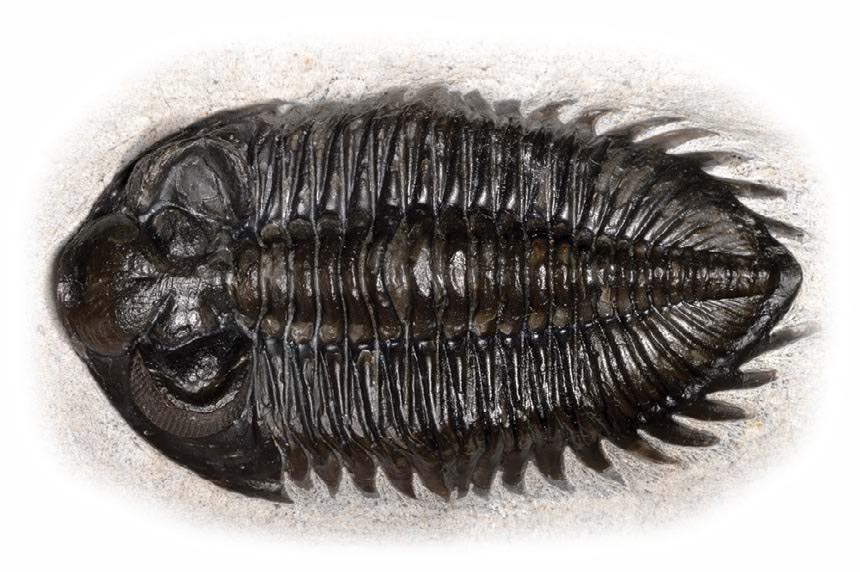
The Devonian was also a relatively warm time, and glaciers likely didn’t exist for most of the period. As a result, sea levels were much higher, with less dry land around the globe than we are familiar with today. In fact, much of the Earth was primarily covered by one enormous ocean, named Panthalassa. This gave sea life the opportunity it needed to flourish and explode in diversity and size. The ocean lifeforms that were common in previous geological eras, such as trilobites and crinoids, still existed in the Devonian, but vertebrates, especially jawed fish, rose to become a dominant force.
Bony fishes and sharks were prevalent in Devonian seas, as were placoderms, which were essentially armored fish. Placoderms had bony plates covering their heads and parts of their bodies, and several species reached many feet in size, though all are extinct today. Countless other fish species, many quite unlike any alive today, saw population booms, and in general, fish diversity and complexity exploded. Many of these species were able to thrive in part due to the enormous coral reefs that formed off the coasts, to which H. percarinata was an important contributor.


Crinoids, nicknamed “sea lilies,” may look plant-like, but they are remains of anchored fan-like animals. Their “stems” were segmented and often fell apart when they died. As a result, small disc-like fragments are very common fossils.

Trilobites ruled the sea floor during the Devonian and were highly successful animals; today, they are extinct.
Though this particular specimen is from the Silurian period, eurypterids like this were a dominant force in Devonian seas.

An artist’s rendition of what Earth looked like during the Middle Devonian. The fish at the center is an armored placoderm feeding upon a eurypterid, also known as a “sea scorpion.” Trilobites can be seen along the sea floor while ferns and other early plants dominate the land.